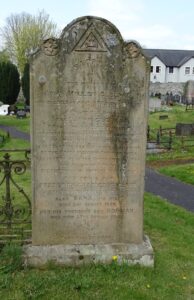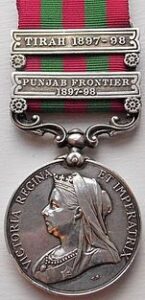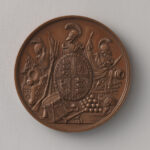A lot of history is hidden in local graveyards just waiting to be brought back to life … sometimes by accident. As Nigel Henderson, a researcher with History Hub Ulster, explains, “I recently visited the graveyard at Hillsborough Parish Church to search for a headstone commemorating Joseph Beddy Lambert, who was killed during the first German air raid on 8th April 1941. A veteran of the Great War, he was injured at Belfast Docks and died at the Mater Hospital. He was 53 years old. I never did find a memorial for Joseph, but I did spot a well-preserved family memorial on which John Cleland, a Boer War fatality, is commemorated.

Although this war is not my usual area of interest, the amount of detail on the headstone piqued my interest. As 8th May is the 120th anniversary of his death, I thought the following short biography would be of interest to your readers. I would also like to take this opportunity to appeal for information about the final resting place of Joseph Beddy Lambert or, indeed, any other blitz fatalities buried locally.”
John Cleland was born on 7th April 1871 at Kilmood, between Killinchy and Ballygowan, to John Millen Cleland and Mary Barclay Cleland (nee Dickson). His father later married Sara Johnson on 22nd October 1885 at Hillsborough Presbyterian Church. John and Sara were both National School teachers and, in the 1901 Census, the family was living at Main Street in Hillsborough and his father was recorded as being a teacher of Chemistry, Physics, Science, and Botany.

 John Cleland was a chemist and a member of the Royal Irish Rifles militia when he enlisted with the Royal Inniskilling Fusiliers at Omagh on 11th March 1890. His period of engagement was seven years regular service and five years reserve service, but he extended his regular service in 1897. He served with 2nd Battalion Royal Inniskilling Fusiliers during the 1897/98 North Western Frontier campaign, being awarded the India Medal (1895) with Punjab Frontier 1897-98 and Tirah 1897-98 clasps. He was wounded during the Second Anglo-Boer War whilst serving with 1st Battalion Royal Inniskilling Fusiliers. On 30th March 1900, General Redvers Buller wrote to the Secretary of State for War listing cases of distinguished conduct in the field. Lance-Corporal John Cleland was included in the report as he had rendered very valuable assistance to the wounded under heavy fire on 23rd-24th February. John Cleland held the rank of Sergeant when he died of dysentery on 8th May 1901 at Middelburg in Transvaal Province. In addition to the Distinguished Conduct Medal, he was awarded the Queen’s South Africa Medal with four clasps – Belfast, Cape Colony, Tugela Heights, and Relief of Ladysmith.
John Cleland was a chemist and a member of the Royal Irish Rifles militia when he enlisted with the Royal Inniskilling Fusiliers at Omagh on 11th March 1890. His period of engagement was seven years regular service and five years reserve service, but he extended his regular service in 1897. He served with 2nd Battalion Royal Inniskilling Fusiliers during the 1897/98 North Western Frontier campaign, being awarded the India Medal (1895) with Punjab Frontier 1897-98 and Tirah 1897-98 clasps. He was wounded during the Second Anglo-Boer War whilst serving with 1st Battalion Royal Inniskilling Fusiliers. On 30th March 1900, General Redvers Buller wrote to the Secretary of State for War listing cases of distinguished conduct in the field. Lance-Corporal John Cleland was included in the report as he had rendered very valuable assistance to the wounded under heavy fire on 23rd-24th February. John Cleland held the rank of Sergeant when he died of dysentery on 8th May 1901 at Middelburg in Transvaal Province. In addition to the Distinguished Conduct Medal, he was awarded the Queen’s South Africa Medal with four clasps – Belfast, Cape Colony, Tugela Heights, and Relief of Ladysmith.
 Gavin Bamford, Chair of History Hub Ulster, concluded, “Every graveyard in Ulster will turn up an interesting story and Peter McCabe, an Associate Member of our society, will soon be publishing a book looking at twenty headstones in twenty different cemeteries in Northern Ireland. The book includes a chapter on the graveyard in Hillsborough and both Joseph Beddy Lambert and John Cleland feature in the chapter.”
Gavin Bamford, Chair of History Hub Ulster, concluded, “Every graveyard in Ulster will turn up an interesting story and Peter McCabe, an Associate Member of our society, will soon be publishing a book looking at twenty headstones in twenty different cemeteries in Northern Ireland. The book includes a chapter on the graveyard in Hillsborough and both Joseph Beddy Lambert and John Cleland feature in the chapter.”
Nigel Henderson can be contacted at nigel_henderson@hotmail.com and Gavin Bamford can be contacted via research@historyhubulster.co.uk
